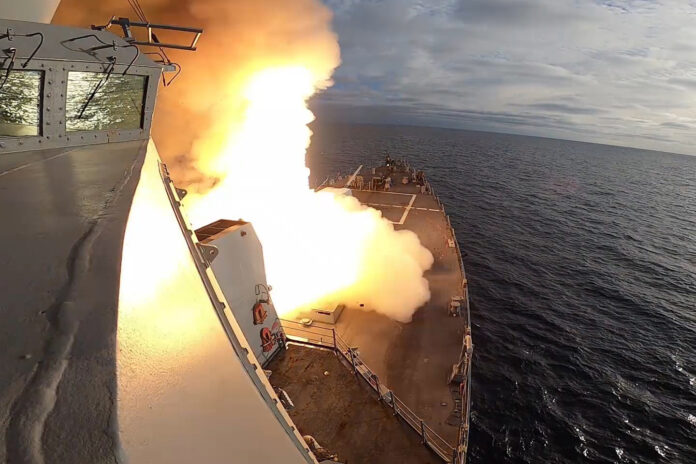
The U.S. Navy launched a missile at a long-range target successfully as a part of Unmanned Integrated Battle Problem (UxS IBP) 21 off the coast of San Diego, April 25.
The destroyer USS John Finn (DDG-113) launched the Extended Range Active Missile (SM-6), striking a target well beyond the line of sight.
Integrated manned and unmanned systems established a track for the launch.

“The missile shoot was definitely challenging but ultimately incredibly rewarding. We were able to see our team’s planning efforts culminate in yesterday’s successful shoot,” said Lt. Cmdr. Ryan Doyle, UxS IBP 21 lead live-fire planner. “This entire exercise was a great opportunity to get staff exercise planners, program designers and most importantly Sailors to work together and integrate multiple unmanned capabilities that are tactically relevant in many areas of the world today.”

The missile launch comes at the conclusion of UxS IBP 21.
“The integrated capabilities demonstrated this week are tactically crucial to improve our warfighting advantage,” said Capt. T.J. Zerr, commodore, Destroyer Squadron 21. “Unmanned technologies are being rapidly integrated into the Fleet for use, and our gained advantage is in the integration and collaboration between manned and unmanned capabilities tailored to the particular situation and phase of conflict.”
UxS IBP 21
UxS IBP 21 is a U.S. Pacific Fleet exercise, executed by U.S. 3rd Fleet, designed to integrate manned and unmanned capabilities into operational scenarios to generate warfighting advantages. The week-long event involves surface, subsurface, and aerial unmanned assets, operating with littoral combat ships, guided-missile destroyers, guided-missile cruisers, submarines and helicopter squadrons.
SM-6 Missile
Specifications
| Mass | 3,300 lb (1,500 kg) |
| Length | 21.5 ft (6.6 m) |
| Diameter | 13.5 in (0.34 m) for Block IA 21 in (0.53 m) for Block IB |
| Warhead | 140 lb (64 kg) blast fragmentation |
| Detonation mechanism | radar and contact fuze |
| Engine | Two Stage: Solid rocket booster, solid rocket booster/sustainer |
| Wingspan | 61.8 in (1.57 m) |
| Operational range | ~130 nmi (150 mi; 240 km) (Block IA) |
| Flight ceiling | >110,000 ft (34,000 m) |
| Maximum speed | Mach 3.5 (2,664.2 mph; 4,287.7 km/h; 1.2 km/s) |
| Guidance system | Inertial guidance, active radar homing and semi active radar homing |

Check out Naval Library App to find out the specifications of the Naval Missiles




